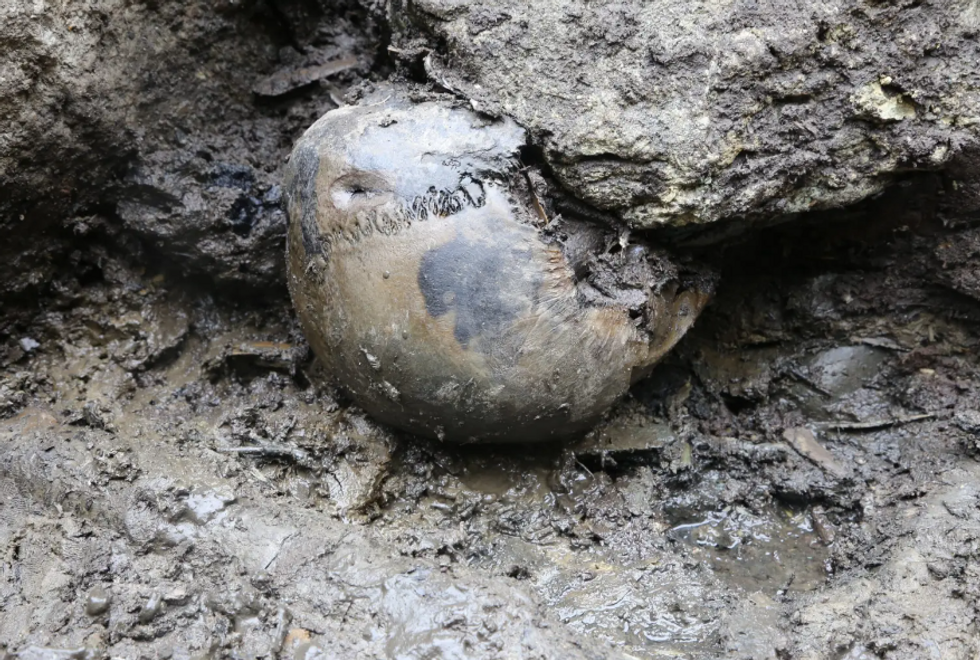Archaeologists make discovery to solve 800-year-old mystery over attack on castle

In 1197, a corpse was chucked down a well in Norway and historians have pondered for centuries as to who the man could have been
Don't Miss
Most Read
Latest
The identity of a man at the centre of an 800-year-old mystery who was chucked down a well during a battle is believed to have been uncovered.
During a battle at a castle in Norway in 1197, a corpse was chucked down the well, with historians believing this was done in an attempt to contaminate the water sources.
The incident was documented in the Sverris Saga, a text that recounts the life of the Norwegian king Sverre Sigurdsso who lived in the 12th and 13th centuries.
Much of what is known about Norway’s early history comes from the 182-verse saga - which was believed to have been penned by a close friend of the monarch.

During a battle at a castle in Norway in 1197, a corpse was chucked down the well, with historians believing this was done in an attempt to contaminate the water sources
|The Norwegian Directorate for Cultural Heritage
Many battles are discussed in detail in the ancient Norse text, including one that took place 800 years ago near the present-day city of Trondheim, in central Norway.
The archbishop’s fighters, known as the Baglers, attacked Sverresborg when the monarch was away.
The Baglers, who stem from the south of the country, “took all the goods that were in the castle, and then they burned every single house that was there,” the saga reads.
“They took a dead man, and cast him headfirst into the well. Then they piled stones into it until it was full.”
MORE ARCHAEOLOGY BREAKTHROUGHS:

The unlucky figure was assumed to be one of the king’s men
|The Norwegian Directorate for Cultural Heritage
The unlucky figure was assumed to be one of the king’s men, though little else was known about the “well man” for centuries until 1939, when a partial excavation of the castle found a human skeleton seven metres down the shaft.
However, the “well man” was forgotten during World War Two, when the German army occupied the area.
Fast forward to 2014 and 2016, and a team led by archaeologist Anna Petersén resumed the dig and they uncovered additional remains, including his left hand and skull.
The team determined that the man had been about 1.75 metres tall and was between the ages of 30 and 40. Petersén said that there was a “high probability” that this was the skeleton of the “well man”.
But new research has uncovered even more information about the man thanks to radiocarbon dating and advanced gene-sequencing technology.
A new study published in the journal iScience has determined that the man was from southern Norway, disproving the long-believed theory that he was one of the king’s men.

Excavations in 2014 and 2016 unearthed more of the man's remains
|The Norwegian Directorate for Cultural Heritage
“Perhaps the Baglers threw one of their own dead into the well,” researchers wrote.
Professor Michael D. Martin of the Norwegian University of Science and Technology’s University Museum in Trondheim, Norway, said: “This is the first time that a person described in these historical texts has actually been found.
“There are a lot of these medieval and ancient remains all around Europe, and they’re increasingly being studied using genomic methods.”
A DNA sample from one of the man’s teeth revealed that he likely had a medium skin tone, blue eyes, and light hair.
“We can never be 100 per cent sure that the remains in the well are those of the man described in the saga,” Martin admitted.
“But the circumstantial and scientific evidence is very convincing. In a hypothetical trial, if a jury were presented with the scientific evidence and the text of the saga, I know they would be convinced that we had found the victim.”








